
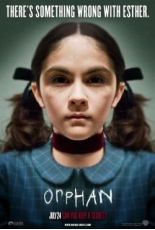 Having second thought about getting a vasectomy? Watch Orphan and you’ll be reaching for the kitchen scissors and a hand mirror before the third act. It’s not like there’s a dearth of evil-kid suspensers, but the girl at the center of this one could turn you into a misogynist.
Having second thought about getting a vasectomy? Watch Orphan and you’ll be reaching for the kitchen scissors and a hand mirror before the third act. It’s not like there’s a dearth of evil-kid suspensers, but the girl at the center of this one could turn you into a misogynist.
Her name’s Esther (Isabelle Fuhrman), a 9-year-old girl from Russia adopted by a lesbian couple — oh, that’s Peter Sarsgaard, you say? My bad! — a married couple grieving over the sudden death of their third baby. Kate (Vera Farmiga) is a recovering alcoholic; she and hubby John (Sarsgaard) have a deaf daughter and an asshole son, so adding a cold-blooded killer to the mix seems like a natural move.
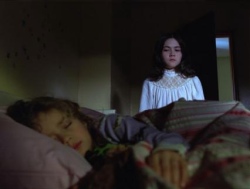 Esther’s warming-up period includes watching John bend Kate over the kitchen counter. Kate tries to explain: “They want to show that love, they want to express it.” Replies Esther, “I know — they fuck.” (Art Linkletter, you were so correct!) Before long, the girl is breaking legs, killing nuns, destroying marriages, setting fires, playing the piano even though she said she couldn’t — is there no end to her reign of terror?
Esther’s warming-up period includes watching John bend Kate over the kitchen counter. Kate tries to explain: “They want to show that love, they want to express it.” Replies Esther, “I know — they fuck.” (Art Linkletter, you were so correct!) Before long, the girl is breaking legs, killing nuns, destroying marriages, setting fires, playing the piano even though she said she couldn’t — is there no end to her reign of terror?
By-the-numbers it may be, Orphan is at least well-made mediocrity by House of Wax director Jaume Collet-Serra, and Farmiga seems not to realize this is a Dark Castle release — she acts the hell out of the thing as if AMPAS voters might be sniffing around on accident. Its biggest mystery isn’t what made Esther the pigtailed bitch that she is, but: 1) who thought that twist would work, and 2) why is this thing over two hours long? Why, God, why? —Rod Lott

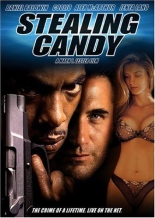
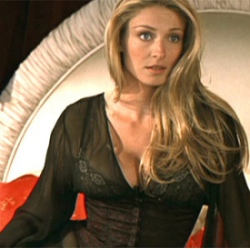 Candy (luscious Jenya Lano), who has a no-nudity clause in her contract, agrees to, um, perform, but only to save her life. When it comes time for the big bang, the movie actually delivers the goods. And when the netcast is over and $13 million sitting in an offshore account, alliances are tested, secrets are revealed, tables are turned and Lano’s breasts go back in her bustier.
Candy (luscious Jenya Lano), who has a no-nudity clause in her contract, agrees to, um, perform, but only to save her life. When it comes time for the big bang, the movie actually delivers the goods. And when the netcast is over and $13 million sitting in an offshore account, alliances are tested, secrets are revealed, tables are turned and Lano’s breasts go back in her bustier.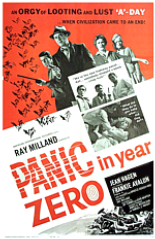
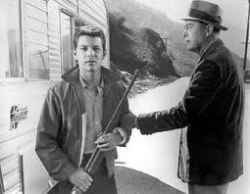 Eventually, they find relative peace and quite in a cave, but it is short-lived, as their situation soon spirals into rape and murder. Milland spends the movie barking orders to son Frankie Avalon and rarely takes off his hat and suit, despite the apparent end of the world.
Eventually, they find relative peace and quite in a cave, but it is short-lived, as their situation soon spirals into rape and murder. Milland spends the movie barking orders to son Frankie Avalon and rarely takes off his hat and suit, despite the apparent end of the world. 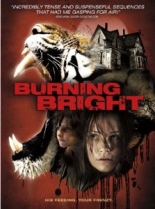
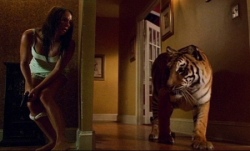 Johnny boards Kelly and Tom inside because of the oncoming storm and heads to the bar … but not before letting his new purchase slip inside, too. ZOMG KITTEH!!! Thus begins a half-literal game of cat-and-mouse that shouldn’t be able to sustain itself for more than an hour, yet does.
Johnny boards Kelly and Tom inside because of the oncoming storm and heads to the bar … but not before letting his new purchase slip inside, too. ZOMG KITTEH!!! Thus begins a half-literal game of cat-and-mouse that shouldn’t be able to sustain itself for more than an hour, yet does. 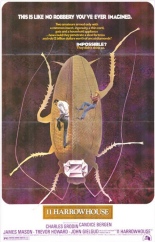
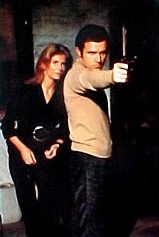 Unwilling to accept her help to pay back the money he owes, Grodin decides to relieve John Gielgud and the market-controlling “System” of their hidden stash of diamonds, with the help of a cancer-stricken James Mason and a painted cockroach.
Unwilling to accept her help to pay back the money he owes, Grodin decides to relieve John Gielgud and the market-controlling “System” of their hidden stash of diamonds, with the help of a cancer-stricken James Mason and a painted cockroach.